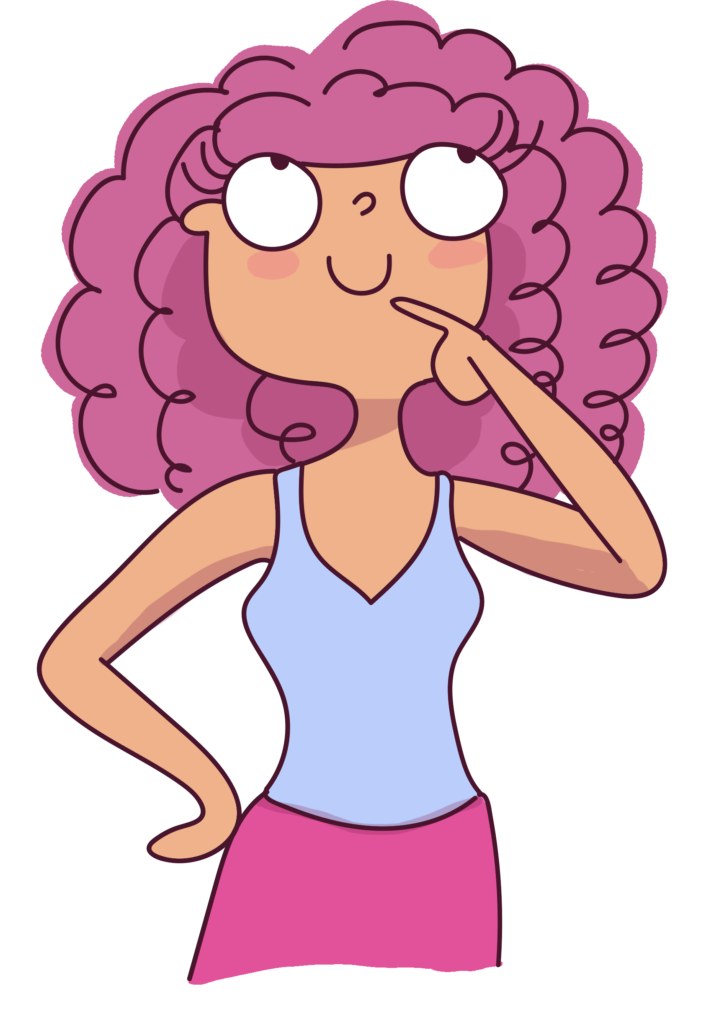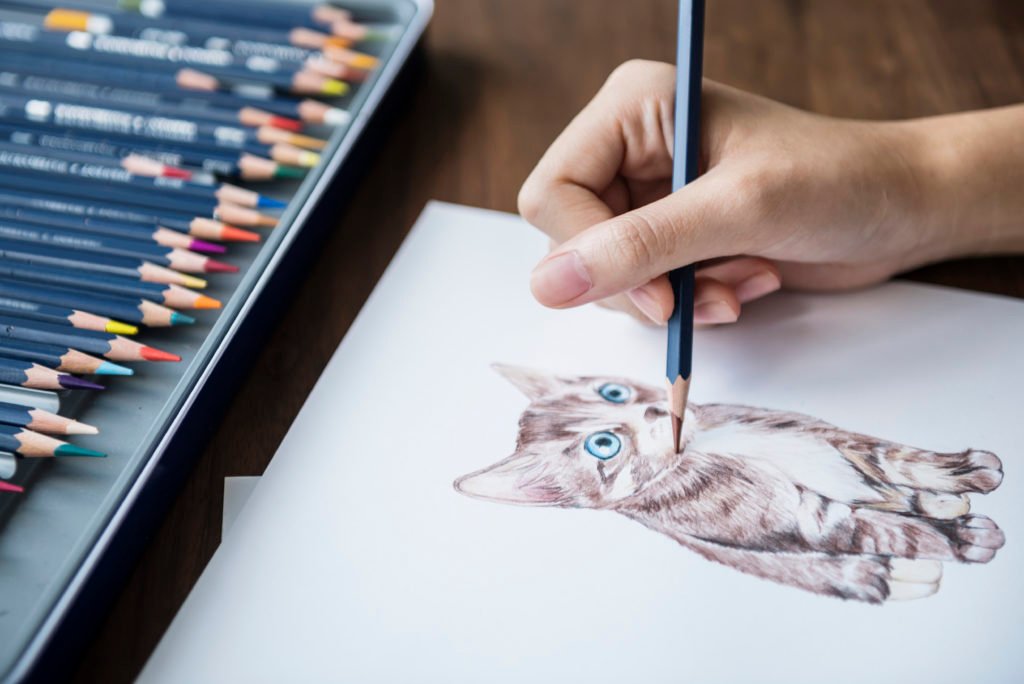Drawing is a lovely hobby to pick up.
It doesn’t matter if you want to practice traditional or digital art, this hobby can be practiced by both kids and adults.
So, the main question I often get asked is, does drawing increase creativity?
Yes, drawing actually increases creativity.
When we engage in any creative activity like drawing, sketching, or painting, we are in fact using the right side of our brains. This helps us build new neural connections and pathways which help us boost memory and increase our ability to recognize patterns, colors, and shapes.
But before I get into the post, please take a moment to subscribe to my weekly newsletter, where I send all kinds of drawing tutorials, drawing worksheets, and drawing resources like courses and books:
It’s the perfect opportunity to get inspired and be consistent with drawing!
This post includes affiliate links. If you do decide to purchase something, I will make a commission at no extra cost to you. For more information, please read my entire Privacy Policy here.
Table of Contents
How does drawing help creativity?

There are so many benefits to drawing and that’s why it’s a hobby that a lot of people love picking up.
1. More neural pathways are built
Studies show that when people were asked to draw a certain object multiple times, the connection between the occipital cortex and parietal cortex (an area involved in motor planning) developed and became more distinct.
This means that drawing actually develops your motor skills.
2. Drawing helps you improve your memory
Drawing consistently will help you think more clearly.
Since we are looking at objects or visualizing them when we are drawing them, we are using the same portion of our brains that sees objects.
This not only builds muscle memory and allows us to memorize objects, colors, and scenes better but also helps us recount them at will.
Many studies have been conducted and it has been proven that people who draw and doodle while they take notes actually retain what they’ve been listening to much better.
3. You will have a better understanding of Color Theory
When you start drawing, you will actually be able to picture what an object will look like in certain colors, and accordingly, you will be able to transfer that to your canvas.
This is a very useful skill because colors tell a story.
You can also take an online course to help improve your understanding of color theory.
But color theory is very important for creativity and is highly connected with visual storytelling.
4. It will help you study body language and emotions
Because at some point in learning to draw, you will learn how to draw human anatomy.
This will help you learn body language and in doing so, you will be able to read people’s body language better.
You’ll notice things like:
- Droopy shoulders mean the person is lethargic or sad
- Crossed arms mean a person is closed off and not open
- Eyebrows raised meaning a person is shocked
As you keep drawing expressions and practice gesture drawing, your ability to connect emotions with their corresponding body language will improve.
5. It improves your focus and attention to detail
Drawing a subject or a landscape for long hours will help you pay fine attention to detail.
This will also help you increase your focus and patience.
Because drawing helps improve your memory, your focus, and your ability to think more strategically and clearly, it does actually boost your creativity and this can be reflected in many other fields.
Is drawing a creative skill?
When you are drawing a perfect replica of an object or a photo and recreating it to make an exact copy, you are in fact using your technical ability to recreate the image using a variety of tools like sketching pencils and so on.
But if you are drawing using your imagination or drawing without a reference, you are using your creative skills to create art.
Although both practices are considered legit drawing, the former doesn’t help improve creativity or memory. Since we are just copying what we see, it’s more technical than creative.
But if you’re mixing your paints, you are still learning a bit of color theory because you have to create the same colors using primary colors.
However, when you’re drawing from your imagination, you’re relying on your memory and recounting different images and cues to conjure up a drawing.
What you are making doesn’t in fact exist and this actually helps boost your creativity.
Anyone can learn how to draw.
What happens when you draw every day?

1. You will boost your muscle memory and motor skills
The biggest advantage of drawing every day is boosting your muscle memory and your motor skills.
Remember the first time you sat down to play the piano or drive a car. It may have taken you ages to coordinate your hand movements.
You actually took time to translate what you were thinking into your movements.
But with time and practice, it got easier.
And now you can do that without much thinking. Your fingers now will flow smoothly across the piano as if it had a brain of its own.
This is sort of what you can expect to learn when you start drawing.
Initially, drawing a curve or shading will seem unnatural. It may take a lot of time for you to translate what you see in your mind onto a piece of paper or the drawing tablet.
But with time, drawing will become second nature to you.
The same goes for what you’re drawing.
2. You will learn to draw without reference
If you practice drawing people in different poses every single day, you will automatically learn to draw a person in a particular pose without needing a reference.
This is because it will become muscle memory for you.
You will be able to draw:
- Poses
- Animate figures (if you’re practicing animating)
- Extensive figures and shapes
- Buildings and complex structures
- Nature and landscapes
The possibilities really are endless when you’re learning to draw every single day.
3. You will be able to draw faster
Think of it like typing.
When you first started typing, you probably took a long time to memorize the keys.
But now, you can probably type with your eyes closed and you can type paragraphs in seconds.
Drawing is just like that.
As you keep practicing drawing consistently, you’ll get faster and better.
You will be able to complete complex pieces easily and without much thinking and practice.
Is art talent or a skill?
Drawing or art is definitely a skill and not a talent.
Nobody is born an artist. However, people can be born with an innate passion to draw or create art. They may be drawn to make art. This helps them improve their drawing and art skills and makes them much better artists than people who don’t practice.
Similar to playing a musical instrument or riding a horse, you can’t just be a natural at drawing. It takes a lot of effort and skill to become a professional artist.
Related post: Read how long it takes to learn to draw
How many hours a day should I draw?
If you are just beginning as an artist, I would suggest drawing no more than 15-30 minutes a day. Once you are sure that you are able to draw 15-30 minutes a day and you have been drawing consistently for at least 60 days (or 2 months), you can slowly start to increase the time duration to 45 minutes or an hour.
This is because you need to build a habit to draw first before you start to fall in love with the practice.
And with time, you can take it up from there.
I do not suggest starting to draw at 3-4 hours a day.
This is going to become very intimidating and you will burn yourself out.
So, take it easy and increase the time duration slowly. I suggest this for any hobby – not just drawing.
What part of the brain is used for creativity?
When you draw, sketch, paint, or do any art-related activity, you are using the right hemisphere of your brain. This part of the brain is responsible for most of your creative endeavors.
How do artists spark creativity?
There are many things you can do as an artist if you don’t feel like drawing and really need to exercise your creativity muscle.
As an artist myself, these are strategies that I frequently use:
Flip through art magazines
One of the most common and beautiful art magazines is the CDQ (Character Design Quarterly) which comes out every quarter.
These magazines are really good and include detailed tutorials and interviews with other artists that will inspire you to start drawing yourself!
Read inspiring stories
Another way to get inspired is to read inspiring stories of other artists that have already reached a goal you want to in the future.
Just reading about their daily drawing habits and seeing their progress will inspire you to set a drawing schedule and commit to drawing.
Watch tutorials
As much as I love books that teach drawing, I am a big fan of online drawing classes.
These are so easy to learn from because you watch the instructor draw step by step themselves.
I constantly pick up classes on Domestika (you get to own them forever if you buy the class once) and I like improving my skills just by watching them.
Artists, in general, are inspired by art – art made by other artists.
So, in short, that’s where we get our inspiration from.
At what age do kids start to draw?
Most kids start to recognize shapes and colors at 3 years old.
This is when kids start drawing.
This is also when I started drawing and coloring. You can read this post to learn when toddlers pick up drawing.
You can get a lot of fun gifts for your kids to encourage them to start drawing.
Takeaway – Does drawing increase creativity?
Yes. Drawing really helps increase creativity and is an excellent hobby for both – kids and adults.
It’s also a very inexpensive hobby especially if you pick digital art over traditional art.
I hope this post was super helpful and if you have any more questions or ideas for blog posts you want me to write, just leave a comment down below!
Ciao!
Here are a few more posts you may enjoy:
- How to respond to compliments as an artist
- How to draw when you don’t feel like it
- How to draw without a reference
- How to get better at drawing (for beginners)
- How to find your art style when you’re a beginner artist
- 13 signs you were meant to be an artist
- How long does it take to learn how to draw? (Explained)
- How to become a full-time artist without a degree
- 13 drawing mistakes most beginner artists make
- 9 drawing books for beginners
- Fun drawing gifts for children under 10 years old
- 13 easy ways to make money online as an artist
- 13 reasons why people like drawing + drawing benefits!
- 13 Ways to be a more Confident Artist









Leave a Comment